![Construction Schedule - [Types, Characteristics, and Templates]](http://royalcdkeys.com/cdn/shop/articles/image3-1690830485488.jpg?v=1719514229&width=1100)
Construction Schedule - [Types, Characteristics, and Templates]

Every construction project has detailed planning that determines and clarifies the tasks the teams must develop and the time allocated to every task. Good construction planning is the difference between a successful and a failed project.
To be clear, organizations and real estate use a document known as Construction Schedule when developing construction projects. This document indicates everything builders, architects, engineers, and others must know to complete the project. This article will teach you everything you need to know about construction schedules.
Construction Schedule - [Types, Characteristics, and Templates]
What Is Construction Scheduling?
A construction project schedule is a document that defines every event, activity, and task in a specific construction project.
Every project is a program of hundreds of tasks builders should carry out to advance the construction. After finishing all the tasks and events, the product is completed.
Construction schedules are built during the planning phase, several months or weeks before starting with work.
A well-oriented construction schedule is the key to any successful construction project management. That is the relevance of this document.
This document is also crucial for project managers since it contains all the resources needed for every task, the cost, and the duration of each task.
In a nutshell, this document should contain the following:
Relevant deadlines;
Resource management;
Allocated assets;
All project deliverables;
Specific tasks that need to be completed;
Any task dependencies that exist;
Task durations;
Set budgets and costing.
Why Should Your Company Use a Construction Schedule?
Budget and timeline are crucial aspects of a successful construction process and building a great structure. This way, companies can track progress to stay on schedule and have total control of everything that happens during construction. Besides, companies use this file to track contractors or subcontractors and maximize their productivity. Some other benefits are the following:
Helps to manage the quantity of materials, labor, and essential elements on time the project needs.
It improves workflows and enhances communication between stakeholders.
Ensures that the budget will be adequate, as well as the timeline.
Allows managers, employees, and contractors to anticipate what is to come.
Lets the team know the primary tasks, and enables prioritizing work according to particular conditions.
Types of Construction Schedules
You can use eight types of construction schedules to improve the efficiency of building work. Below we briefly mention and describe them.
Line of Balance (LOB)
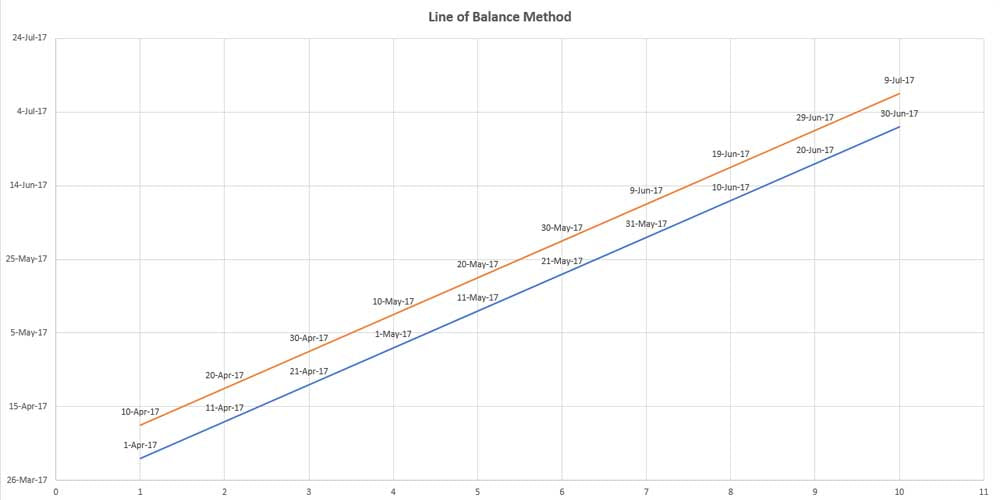
This type of construction project is perfect for projects with repetitive tasks and units of work. With this document, the project manager can forecast how long each task will take and predict the overall time of all units to complete the project.
Quantitative Scheduling

The quantitative method allows scheduling the use of equipment and materials most efficiently. Sometimes called Q Scheduling, it helps showcase the number of resources, their allocation, and how they impact the project budget. This is the only construction schedule type that the successful project management department can use to tie the order of tasks to expenses.
Gantt Chart
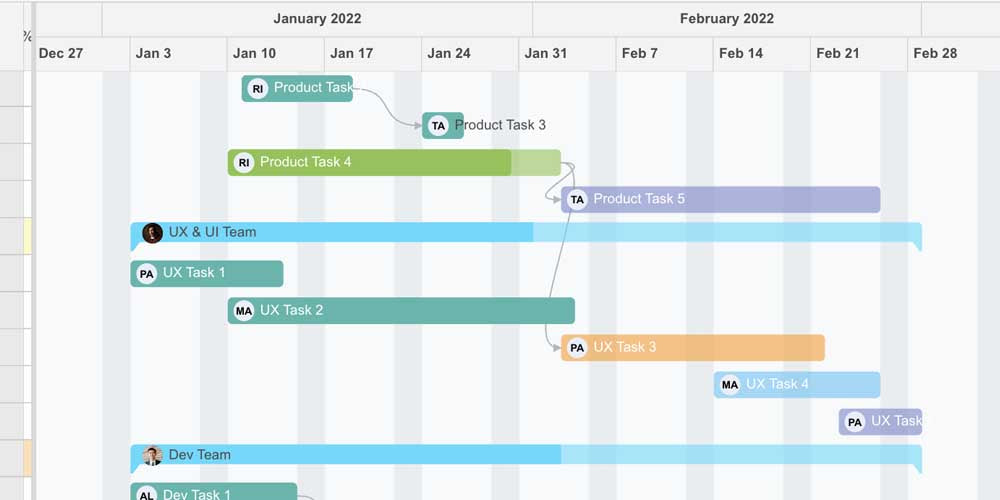
When creating a construction schedule, Gantt charts are the most used type. They're a classic since they show all the tasks, their duration, start and end dates, and how they relate to each other. They are great when your team needs to visualize a work breakdown structure most easily and even track the project's progress. Besides, locating the critical path with this type is straightforward.
Critical Path Method (CPM)
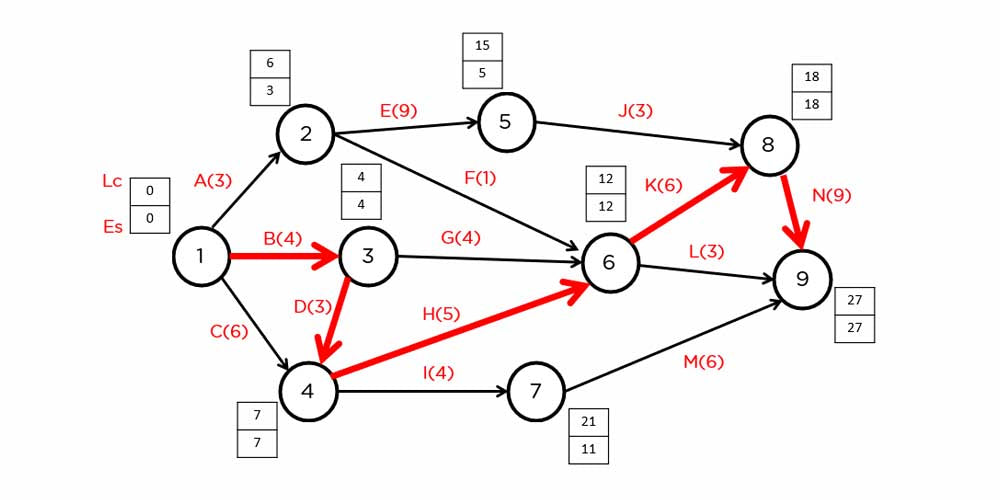
The critical path, as its name suggests, indicates all the mandatory tasks and must be successfully completed to ensure the project's completion. Any task involved in the critical path is a fundamental project phase since all other activities can only be developed with the completion of the critical path's tasks.
The critical path method is crucial when you must identify the best sequence for your team to complete tasks. Still, this type of construction schedule is not the one to determine the resources that every task needs.
Program Evaluation and Review Technique (PERT)
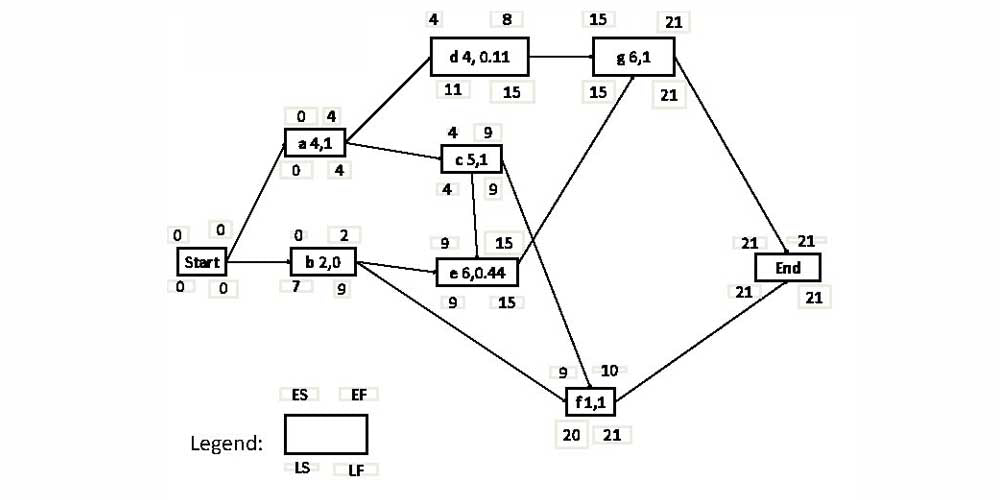
This type of construction schedule document is a handy project management tool for companies that need to clarify dependent tasks and interdependencies. In a nutshell, a PERT lays out the milestones that indicate the project’s progress.
This type of construction schedule is excellent for estimating the most likely time. It's also great to check a project's variation potential, making it ideal for projects with unique development.
Resource-Oriented Scheduling
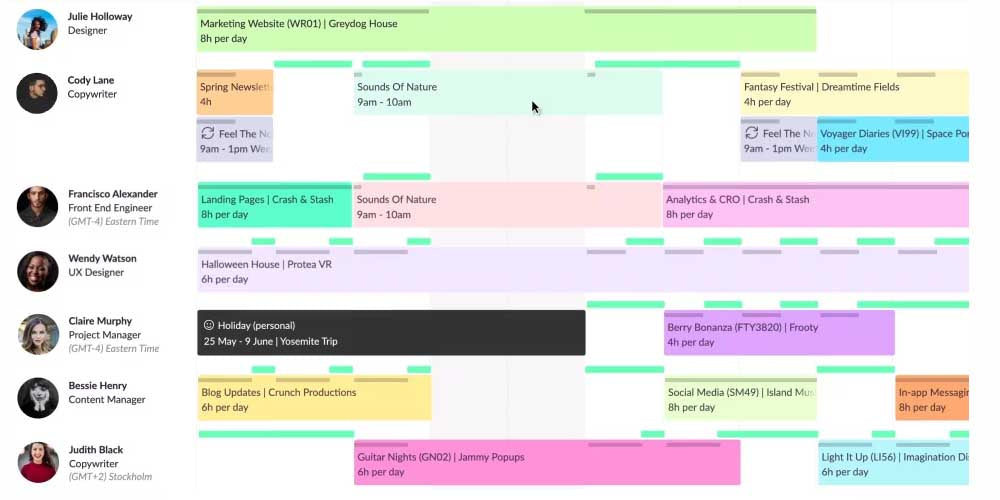
As its name indicates, this construction schedule focuses on resource allocation. This accurate construction schedule emphasizes labor, space constraints, funding, and other details. The resource-oriented scheduling allocates resources in the same quantity during all the projects, adding weeks to the project plan. On the other hand, it also allows you to change project activities depending on the resource capacity.
Last Planner System
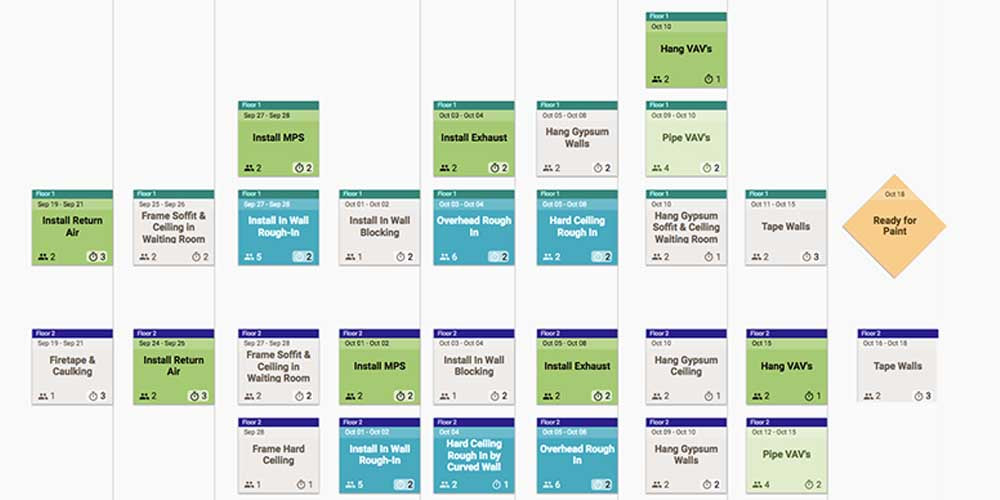
Among all the scheduling techniques, the Last Planner System shows your project's details and structure, paying special attention to key events and project deadlines. Thanks to this document, managers and employees will start their activities with the end date in mind. That way, they can work backward and define strategies to complete the required tasks.
Lookahead Planning
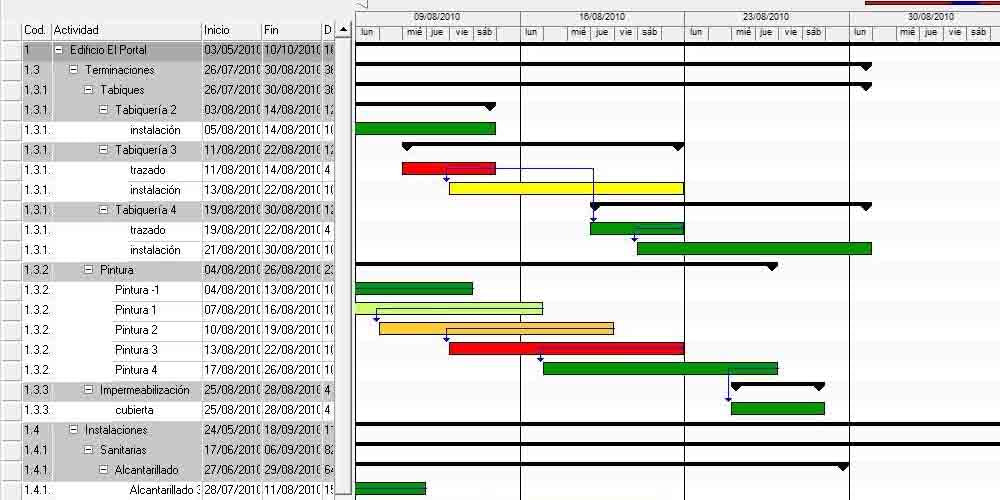
This construction schedule is excellent when your team needs to cover a short upcoming project, generally projects of no more than six weeks. When you have to plan a construction project just with a few tasks, lookahead planning becomes a great initial schedule and tracking the actual progress of all tasks.
How to Make a Construction Schedule
You can quickly make a construction schedule in five easy steps. Scheduling software may be beneficial even to accelerate the process. Below we mention all the details.
Gather Data and Tools
Constructing involves a lot of items, including resources, employees, labor, materials, start and end dates, stakeholders, costs, etc. In this context, knowing all these items is the first step for an accurate schedule.
Create a list with all the items involved in the entire project. Once you have the list, define the hierarchy and items crucial for the building process—for example, site clearing, which is mandatory for starting with foundations.
This list also should contain the needed materials and the estimated duration of the entire project.
In this sense, having good construction software that allows you to manage Excel or Google Sheets documents is crucial. The best for these purposes is Microsoft Project, a software that facilitates running multiple projects, tracking their tasks and progress, and defining dates and general costs.
Here at RoyalCDKeys, you can acquire a copy of Microsoft Project Pro 2021 Global Key at the lowest price on the market.
This software is the standard in the construction industry and a tool that all construction managers use to improve efficiency and manage tasks and resources.
Collect and Prioritize Tasks
Once you have a list with all the project items, it's time to break down all the projects into steps and tasks. This is how you should create another list containing all the required tasks to lead the project to completion.
A good strategy is gathering all the contractors, subcontractors, stakeholders, and responsibilities to go through the list containing all the tasks. Remember that dependencies exist between tasks, independent of your scheduling methods.
Besides, managing smaller tasks will allow you to quickly achieve milestones and better manage teams in charge of these tasks. Milestones mark the end of a significant phase clarifying the completion date of these phases.
Set the Duration of Tasks
It would help if you defined any task duration to create a targeted timeline considering the whole project. Remember that any milestone will contain several smaller tasks, each lasting a specified number of hours or days with a certain number of workers.
The best way to define the duration of all tasks is by using a Gantt chart. This structure will help you to set how many days your team needs to complete a task. Time must be realistic and consider special events, such as sick and vacation days for workers. This situation can lead to unexpected delays.
Remember that when you work with contractors and subcontractors, they may be late on tasks, so your construction plan must consider possible delays.
More tasks are subject to changes; then it's also essential you keep the schedule up to date!
Allocate Tasks of the Scheduled Work and Execute
Allocating tasks to teams or all the subcontractors involved is an essential part of the construction schedule. Tasks won't get done by themselves, and there may be hundreds of them, so allocating them clearly is crucial to keep them on time and on budget.
A good strategy is to code tasks by color. Color-coding tasks will help you to differentiate teams, hierarchy, and the urgency of one task. This way, you can set the distribution of the overall project and how it will develop.
To correctly allocate tasks and define any start date, you need to have a detailed profile of the teams' skills. Once all the activities are assigned to groups, workers, or contractors, you can allocate resources and start with the work.
Review
While advancing in the building, you must review the construction schedule occasionally to verify that tasks are on time and within budget and that the resource assignments are correct. Permanent monitoring is key since schedules can vary, adding new tasks or subtracting some of them.
Check your project progress is in line with your initial plan!
The information you get from possible delays can benefit your next project. Resource constraints will also provide crucial information about how many materials each task needs, leading you to make better decisions.
Construction Schedule Templates
You can check the template we share to understand better the concept that concerns us in this article. They will provide you with the question's general scope and help you build your schedule.
Commercial Construction Schedule Template
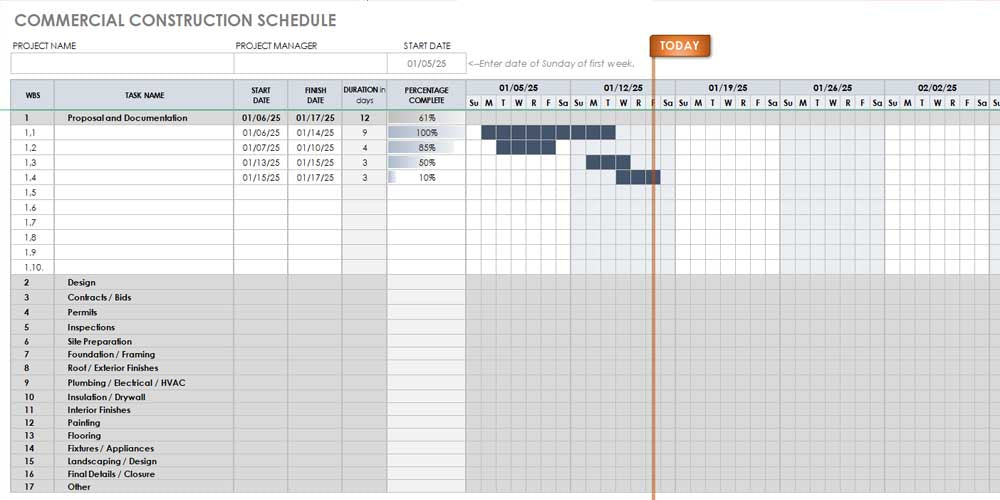
This document corresponds to a simple spreadsheet file, allowing you to insert all the activities and tasks your project needs easily. This template also integrates the start date and the finish date and a monthly schedule to track progress. Besides, this template allows you to use building codes to differentiate teams in charge and urgency. Once you've established all the required tasks, you can export this file to MS Project to visualize the project through a Gantt chart. This way, you can estimate the critical part and dependencies.
You can download this commercial construction schedule template from Smartsheet.
Simple Construction Schedule

This template is a perfect model for businesses and companies needing a simple way of defining tasks and their time-consuming tasks. This is very similar to the previous one but contains just the essential info, such as start and end dates and the completion time. Of course, since it's a spreadsheet document, you can add columns and rows for other tasks and describe the resources needed.
You can download this simple construction schedule from Vertex42.
Free Basic Construction Schedule
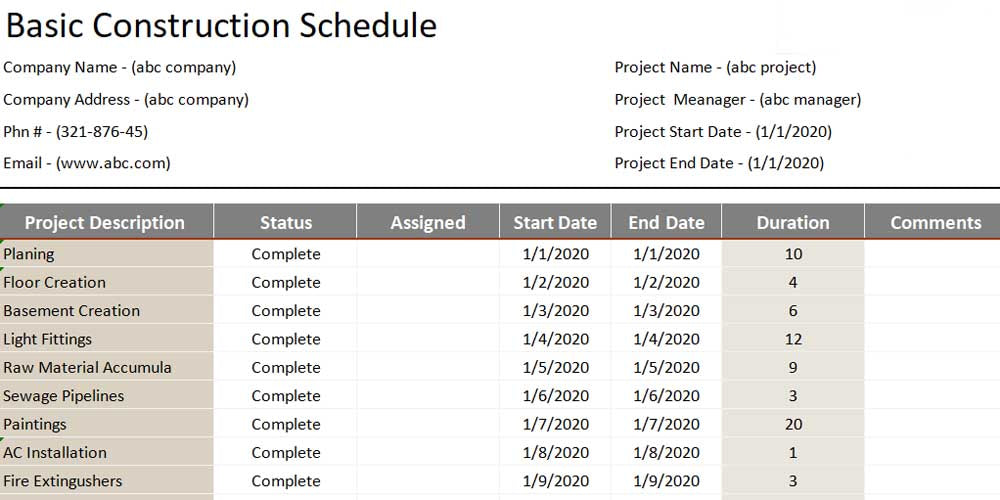
This template is a simple list of all the tasks your project needs to end effectively. It contains enough space for project descriptions, the responsible, status, start and end dates, duration, and comments. Like in previous cases, you can highlight certain tasks over others by using color coding and even describe every activity's limited resources.
You can download this basic construction schedule from Printablesample.
The Bottom Line
Manage and control your construction projects with a proper and straightforward construction schedule document. This file will help you to keep your project on time and avoid potential delays when a situation occurs. If you want to reach success, then using one of the construction templates we've shared with you is the best path to achieve this goal.
On the other hand, if you need more resources and tools for your building company, we have multiple templates and documents here on RoyalCDKeys. Please browse our blog and discover everything we have to offer!
Last, but not least, be aware of all the news and arrivals by subscribing to our newsletter.















